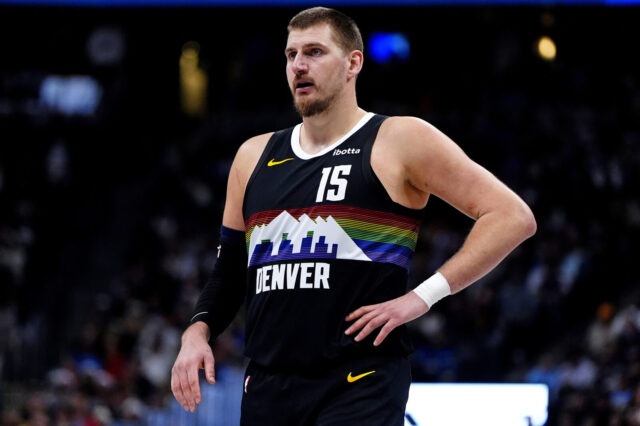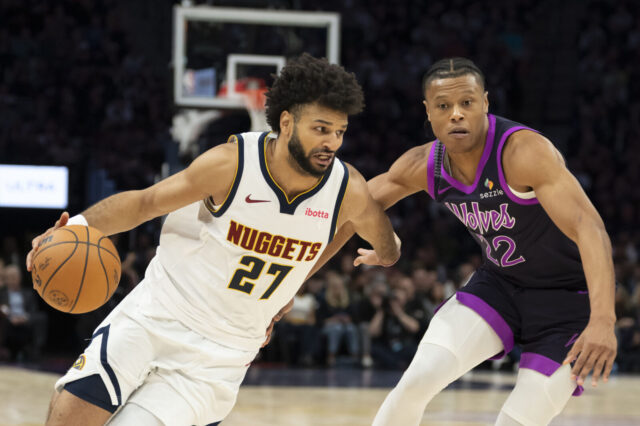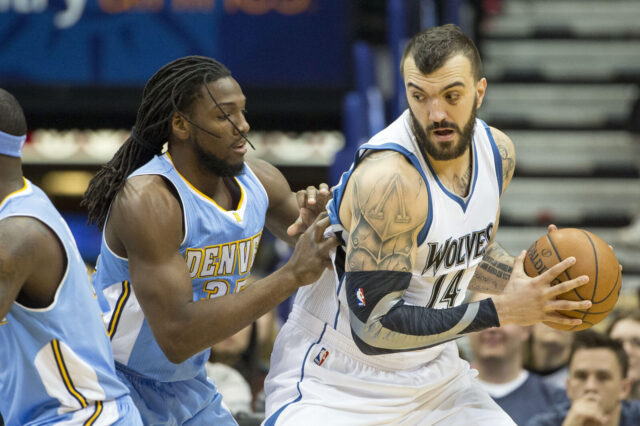If you've not taken the time to watch the PBS Frontline documentary, "League of Denial", it's a disturbing and sometimes breathtaking view of the quite probable damage being done to hundreds (or thousands) of human brains in the name of the almighty touchdown. Having been a massive football fan my entire life, I was disturbed enough by the findings in the documentary to make me question the joys I find in my Sunday Ritual every Fall and Winter. The quandary for me was simple: I love football, and will likely watch it the rest of my life, or the NFL as I know it is no longer. But, in the category of randomly-stored lists in my head, another recently discovered benefit of being the father of two daughters: I'm far less likely to have a child who wants to play football.
Had I had a son after seeing League of Denial (I have two great stepsons, neither of whom pursued football), I'd have thought twice about his participation in football. The minimal odds of him making a long-term living at professional football "someday", weighed against the brain tissue damage they are finding in kids who play the sport at a young age … Let's just say it's not a terribly difficult choice, statistically. And it's hard to not imagine a lot of parents feeling the same way as the issue only gains more exposure in the media.
Even before that expected groundswell, the league is looking at some terribly difficult choices surrounding concussions and chronic traumatic encephalopathy, and who is responsible for what, both as players and owners, and I could fill about 2,000 words on this topic alone … including how I think the owners may eventually disavow responsibility for what's happening to players, but this is not a football blog.
From there, it's not a wild stretch to imagining this currently-tiny linchpin becoming a grenade pin for the NFL, at least the game as we know and love it, which led me to wonder which sport might knock the king (the NFL) off his hill, should professional football see such a decline. I, in my typically biased fashion, concluded that the NBA might be the darling of this long-term race to supremacy. Let me throw a few numbers your way, and then a few ideas about why I formed this self-serving belief.
|
NFL |
MLB |
NBA |
NHL |
MLS |
|
|
Regular Season Length (games) |
16 |
162 |
82 |
82 |
34 |
|
Avg Game Attendance (thousands) |
67.6 |
30.3 |
17.4 |
17.5 |
18.8 |
|
Avg Ticket Price (per game) |
82 |
28 |
51 |
61 |
18 |
|
Avg Season Ticket Sales (millions) |
88.7 |
138.3 |
72.8 |
87.5 |
11.5 |
|
Avg TV Contract (per year, bilions) |
3 |
1.5 |
0.9 |
0.2 |
0.09 |
|
Highest Franchise Value (billions) |
2.3 |
2.5 |
2 |
1.1 |
0.175 |
|
Average Franchise Value |
1.2 B |
811 M |
634 M |
413 M |
103 M |
|
Salary Cap (millions) |
133 |
178 |
63 |
69 |
3 |
|
Maximum Roster Size |
53 |
25/40 |
13 |
20 |
30 |
|
Avg Player Salary (millions) |
1.9 |
3.2 |
5.2 |
2.4 |
0.16 |
|
Avg Career Length (years) |
3.5 |
5.6 |
4.8 |
5.5 |
3.2 |
Let's make a few comparisons, shall we?
NFL
The current king of the hill and media darling in professional sports is the NFL, no doubt. Although baseball currently has the highest valued franchise in sports, the average football franchise value decimates the same value in baseball, at nearly half again the value (the average pro football team being worth $1.2 BILLION. Say that without the Dr. Evil laugh).
However, with the decades-long decline I'm assuming in my argument above, football may not have the stranglehold on sports revenues it currently enjoys. Should young athletes start to do the math, the NFL may have to fight for kids who want to play: Of the five sports shown here, an NFL player sees the largest average roster size, the lowest average salary and the lowest average length to their careers from the league making the most money.
Yes, larger rosters also mean more gigs to fill. No, that doesn't account for the disparity, in dollars or brain cells lost.
These gents are getting their eggs scrambled for the sport that has a lot of money: the second highest dollar total for season ticket sales, and FAR AND AWAY the largest TV contract at $3 billion. Per YEAR. By the way, for the networks, that three billion buys a 16-game season (all numbers were regular season, all leagues have a pre- and post-), which is less than half the season length of MLS (34), and less than a tenth that of baseball (162). Add too many other revenue streams to count, and football is understandably fat and happy in their current multi-billion dollar state. Football's current ace in the hole is their television ratings, but the league understood long ago that the inherent violence of their sport was one of its primary draws (too many "Bone-Crushing-Tackles" videos of some sort from NFL Films to debate this one too hard), and it will be interesting to see what becomes of football ratings if the league is ever forced to change the game to a much broader degree to protect its players.
And if there is a decline, there are additional stressors to the ecosystem which have long gone ignored. As examples, football has had a difficult time gaining an international foothold, and a judge just removed the cap for the league's responsibility in these brain-trauma cases. Attendance has shown a decline for many owners since the mid-to-late 2000's, when things like league packages came into play, and consumers started realizing that if they stayed home and watched the game on the big screen, they got warmer temperatures, cheaper beer, and hopefully no one peeing in the bathroom sink. Several reports have emerged the past few seasons of panicked owners no longer realizing expected ticket sales, and draconian NFL blackout rules further damaging the value of their property locally by blacking the game out from local fans, putting a dent in the sale of gear and fan fare. It's understandable to want measures in place to ensure everyone doesn't stay home and watch, but the system is antiquated in its approach.
MLB
Baseball, America's Pastime(TM), enjoys a sentimental place in my heart as my grandpa's favorite sport, and currently ranks high in sports franchise values, based both on season tickets sales and television contracts. The highest-value franchise in sports is the Los Angeles Dodgers, at $2.5 billion, and MLB's TV contract sits healthily in second place at $1.5 billion per year. Baseball also has a rabid international fan base, and one of the richest histories in sport. Children around the world play baseball, at least those in warm-weather climes, as it has one of the lowest costs to entry of any of the sports listed here. Stickball is ubiquitous in some form from Brooklyn to Central America, and baseball is one of Japan's sports darlings.
Tempering some of that joy are incredibly long seasons (that $138 million in ticket sales looks pretty until you divide it by 81 home games), the second lowest average ticket price (engineered to help fill enormous venues), and one of the more sizable rosters. Even though baseball doesn't go to expanded rosters until after the All-Star break, all 40 of the guys who fill that roster out are paid all season long. In addition, though I love watching a game live or televised, many of my friends liken it to a class on microfiche (no, those are not small French fish). Baseball's TV ratings – for the regular season, playoffs and World Series – continue to trend downward and CNN recently ran a compelling op-ed about baseball's decline. Though I believe baseball will always have an audience, it seems likely that it will be a smaller-percentage one in a decade or so, unless the league finds a way to draw wider interest without those same steps alienating purists like me. A fine line.
NBA
In a year and a half, the NBA's current TV deal is set to expire, and though their deal is already pretty sweet at $900 million a year, analysts expect the next deal to equal-or-best the current MLB TV contract, looking at something in the neighborhood of $1.5-$1.6 billion per season. Add to that the lowest salary costs of the big three – even though NBA players enjoy the highest average yearly salary of any professional athlete, the small roster size places them well below the NFL and MLB for yearly average outlay to their stars. Add to that one of the most motion-intensive and high-scoring games of the five majors, and basketball is well-designed for the action-oriented crowds of our ADD generations.
Additionally, basketball has discovered some distinct advantages globally, in that it is an indoor or outdoor sport. Basketball is played in tiny gyms in frozen little towns, and on hard dirt courts of impossibly impoverished countries. Although soccer and baseball/stickball may have slightly lower-cost-barriers to entry, basketball is insanely cheap to play, and can be played in a space far smaller than either of the other two. Of all of the sports that have experienced a multi-national boom, my guess is that only soccer is played in as-many-or-more places. Think basketball isn't international? Today, whatever is left of the legs of Yao Ming could be signed to a 10-day contract by a lowly NBA club, and immediately be voted into the All-Star Game. Add to that the drama and coverage of this years' draft and free agency period, and the NBA looks to be very much on the rise.
As negatives to the NBA's possible ascension, the history of television ratings for the league have varied widely, enjoying their heyday in Michael Jordan's prime. The most recent Finals saw a 10.3 Nielsen rating at its height, but nowhere near basketball's zenith – Game 7 of the '88 Finals, which saw a 21.2 rating. To be clear about the gap to make up, the NFL had nearly all of the highest-rated shows on television last year (34 of 35).
NHL
Although remarkably similar to basketball in many ways (season length, time of year, similarly small rosters and players-in-play), the numbers surrounding hockey pale in comparison to basketball, mostly due to a decades-long decline in national interest. Hockey ratings pale in comparison to the big three above, and their relegation to NBCSN for the bulk of their games has not helped that issue. Though an amazingly fast and skill-laden game, America has not taken to hockey as it has football, baseball and basketball. To the positive, hockey players are widely acknowledged to be the most generally decent and approachable professionals in major sports, and it is also broadly popular in the international arena.
However, on the youth front, hockey is a sport that is only cheap for those living in the upper Northern Hemisphere during cold winters, which adds a huge barrier to entry for the remainder of the globe. My youngest stepson had a dalliance with youth hockey, and the fees were far and away higher than any of the other sports on this page. Hockey games tend to be low scoring affairs, further alienating hockey neophytes. Fortunately for the NHL, our Canadian neighbors are puck-addicted, and that region adds a tremendous influx of interest and capital (via Canadian TV contracts). You'd wonder what the future of the National Hockey League would be without that leg under the table. As a puck-head, I'm grateful we don't have to find out.
MLS
My mom moved us kids to California when I was five, and I was fortunate to be introduced to the American Youth Soccer Organization (AYSO) in my first year, and ended up playing through the next couple decades. I have a real love for the game, both in watching and play. This past World Cup was the best of my lifetime (apparently the Nielsen ratings bear that opinion out as well) and futbal is far and away the most popular sport in the world, claiming fully half the planet's residents as fans (basketball is third worldwide).
Some MLS clubs have local fan bases that rival the numbers of any American pro major-level team, and English Premier League viewership is on the rise across the U.S. If any sport might be a serious long-term challenger for American popularity, soccer would be at least a solid dark horse, if not the largest threat. The sport looks to finally be gaining traction in several key metrics that should, at the very least, guarantee its long-term survival in the States.
The primary reason for that last bleak bit goes back to those damned television ratings. At its height in 1996, the MLS Finals pulled a comparatively-underwhelming 1.4 Nielsen Rating. Recent viewership places that rating at about a third (0.5 in 2013), and no big TV contracts obviously spell a far lower budget. English Premier League shows more promise stateside, garnering 4.9 million viewers on NBC’s “Championship Sunday”. To contextualize, the recent Broncos-Game-Which-Shall-Not-Be-Named drew a viewership of 111.5 million, and in Game 5 of the recent NBA Finals, the Spurs series-clinching game drew 18 million viewers. Soccer may be a major player in the U.S. in the future, but there are many barriers to clear before the MLS enters into the conversation.
But looking back at those same numbers, the NBA has a viewership a sixth the size of the NFL's, which would lead one to believe basketball has its own hurdles to clear on the road to popularity. There's only one way that 800-pound gorilla at the top falls. If the NFL is forced, by pressure from one of a few possible directions (the public, government, the Players Union, or some combination thereof) to make changes that fundamentally change the way the modern game is played. What that looks like, I have no idea. And maybe it leaves something that still appeals to the masses. Or maybe that leaves room for a new king of the hill on a long-term rise.
Will our Nuggets ever enjoy the popularity of the Beloved Broncos? Just relax, I belove them too. For me, living in a basketball-first town (Los Angeles) that still can't support the NFL gives one a faint ray of hope. Hope that attitude and altitude can finally meet on a little hardwood.
Oh, and at 455.9 cubic inches, we really do have the biggest balls of them all.
This content is no longer available.


